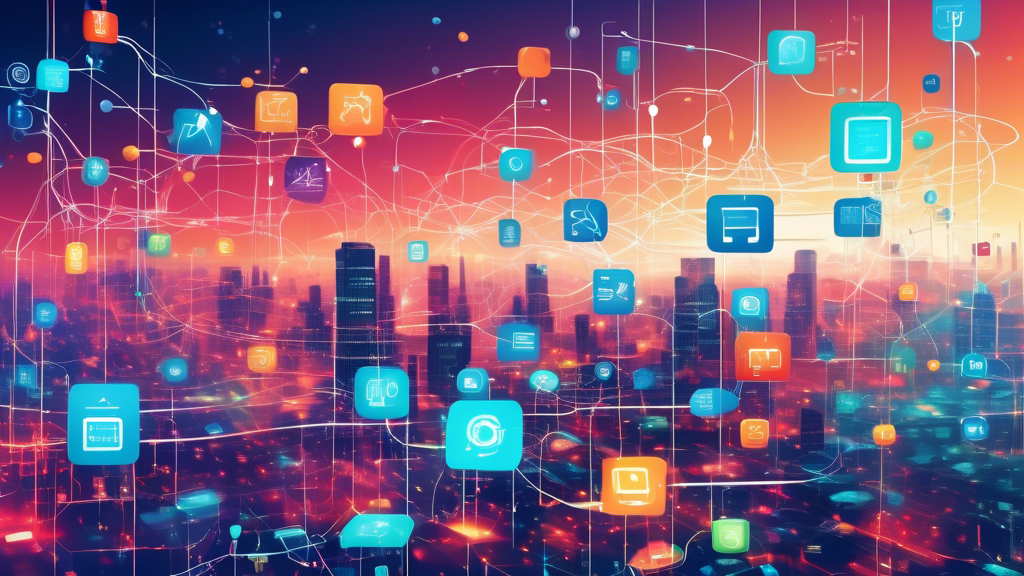Introduction
In the constantly evolving landscape of technology, the Internet of Things (IoT) has emerged as a game-changer, promising to transform how we interact with the world around us. At the heart of this revolution lies the integration of IoT with web development – a confluence that has the potential to redefine the boundaries of what’s possible online. This fusion not only enhances user experience but also opens up new avenues for innovation and efficiency. Let’s embark on a journey to explore this new frontier, where every device can be interconnected, and every interaction becomes an opportunity for innovation. And who knows? By the end of this, we might even find a way to make your fridge judge your late-night snack choices humorously!
The IoT Ecosystem: Understanding the Basics
Before diving deep into the integration with web development, let’s establish a basic understanding of the IoT ecosystem. Imagine a world where your car notifies your home’s heating system of your imminent arrival, ensuring a cozy atmosphere the moment you step in; or envision a smart city where street lamps adjust their brightness based on real-time pedestrian traffic. This interconnectedness of devices, capable of exchanging data with minimal human intervention, forms the essence of IoT. It’s a vast network of smart devices, from mundane household appliances to sophisticated industrial machines, all communicating through the internet.
The Role of Web Development in IoT
Bridge Between Devices and Users
Web development plays a pivotal role in the IoT ecosystem by acting as the primary interface between devices and users. It enables users to interact with their IoT devices via user-friendly websites or web applications. This interaction could be as simple as adjusting the thermostat or as complex as monitoring real-time data from industrial machinery.
Real-time Data Processing and Visualization
Another critical role of web development in IoT is the processing and visualization of data. IoT devices generate vast amounts of data, and web applications provide a platform to analyze and present this data in a comprehensible manner. Whether it’s tracking your fitness metrics over time or analyzing traffic patterns in a smart city, web applications make sense of this data for the end-users.
Challenges and Opportunities in IoT Integration
Security Concerns
One of the most significant challenges in IoT integration with web development is security. With numerous devices connected to the internet, the risk of data breaches and unauthorized access increases. This necessitates robust security protocols and encryption techniques to safeguard user data.
Opportunity for Enhanced User Experience
Despite the challenges, the integration of IoT and web development offers unparalleled opportunities for enhancing user experiences. Imagine controlling all your smart home devices from a single, seamless web application or getting personalized recommendations from your smart refrigerator based on your dietary preferences (hopefully, it doesn’t comment on your midnight ice cream indulgences).
Best Practices for IoT Integration in Web Development
- Focus on Security: Given the security risks, prioritizing secure coding practices and implementing end-to-end encryption is crucial.
- User-Centric Design: The design and functionality of web applications should prioritize user experience, ensuring ease of use and accessibility.
- Efficient Data Management: Efficient algorithms and databases are essential for managing the large volumes of data generated by IoT devices.
- Scalability: Lastly, considering the potential expansion of IoT networks, designing web applications with scalability in mind is fundamental.
Real-World Applications and Case Studies
From smart homes that cater to your comfort and security to healthcare systems that provide real-time patient monitoring, the applications of IoT integration in web development are vast and diverse. For instance, a smart farming application allows farmers to monitor soil moisture levels and optimize irrigation using their smartphones. Similarly, in healthcare, web applications connected to wearable devices can track patients’ vitals, providing invaluable data for preventative care.
Conclusion: The Journey Forward
The integration of IoT in web development marks the beginning of an exciting journey into a future where technology serves humanity in more intuitive and innovative ways. As developers and innovators continue to push the boundaries, the potential for creating more connected, efficient, and intelligent systems is boundless. However, let’s not forget to program a little empathy into our smart devices; we wouldn’t want our smart fridges getting too judgmental about our dietary choices, would we?
As we look ahead, the significance of security, scalability, and user-centric design becomes ever more critical. These pillars will support the expansive growth of IoT applications, ensuring they enrich our lives while safeguarding our privacy and data.
Call to Action
Are you intrigued by the potential of IoT integration in web development? Do you have a project in mind that could benefit from this innovative fusion? Look no further! Visit StarMetaverseGeorgia.com for all your web development needs. Our team of experts specializes in creating seamless, secure, and cutting-edge web applications that bring your IoT projects to life. Let’s build the future, together.

 using WordPress and
using WordPress and
Comments are closed